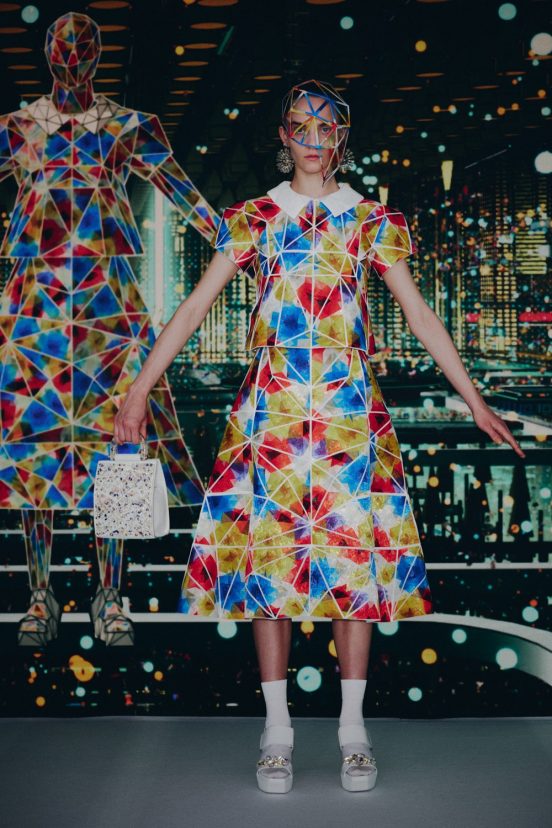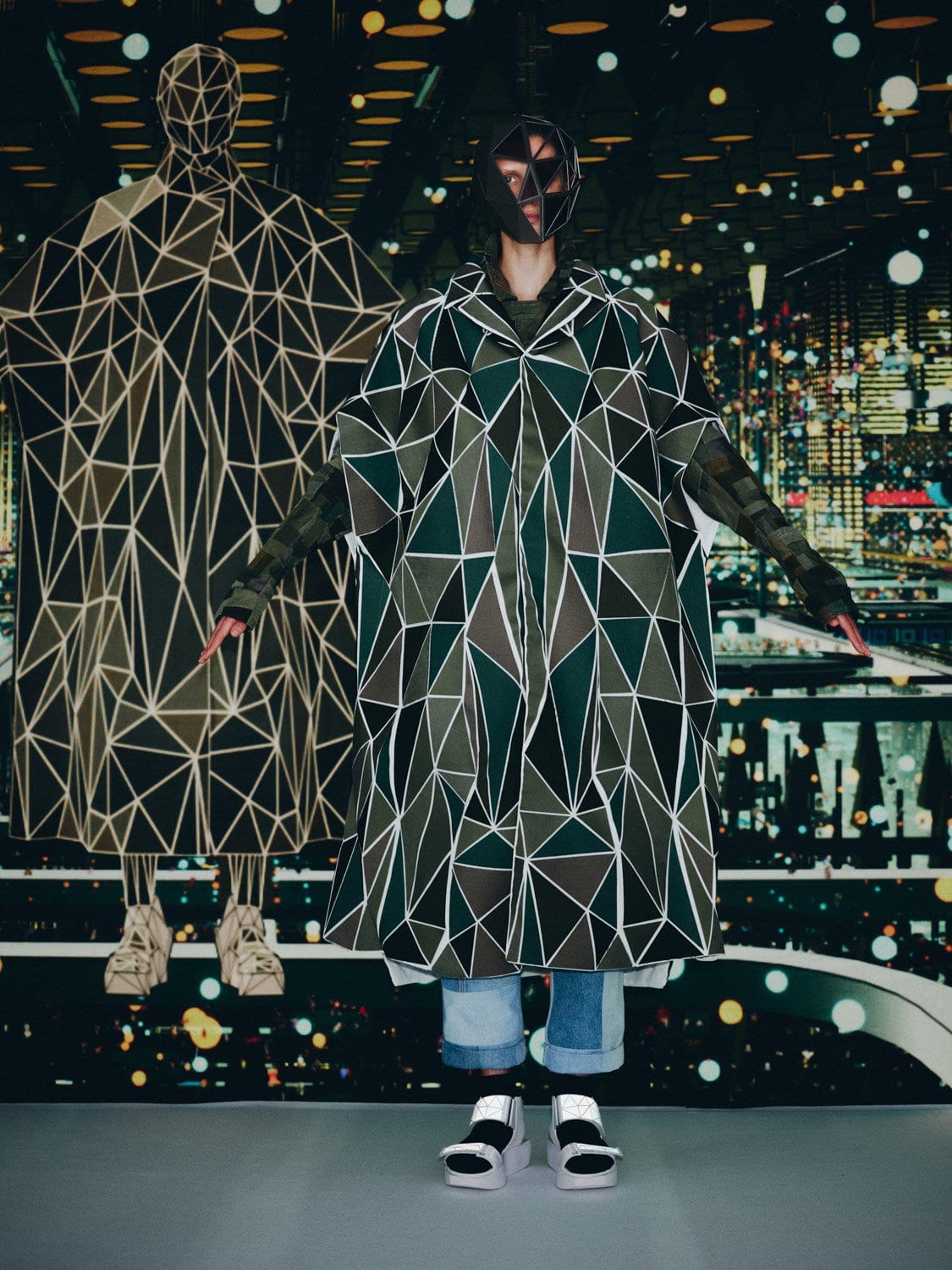Review of Anrealage Spring 2022 Fashion Show
Bridging the Screenwear and the Ready-to-Wear
By Long Nguyen
The Metaverse has been getting more attention lately as the potential of the next boundary in the digital universe for fashion. Still, little focus has been on how this new frontier can impact the design processes.
During the pandemic, as more consumption resumed via e-commerce, interests surged in the physical purchasing of actual clothes and the metaphysical reality of buying just the ‘skin’ of the product that can alter any body shape.
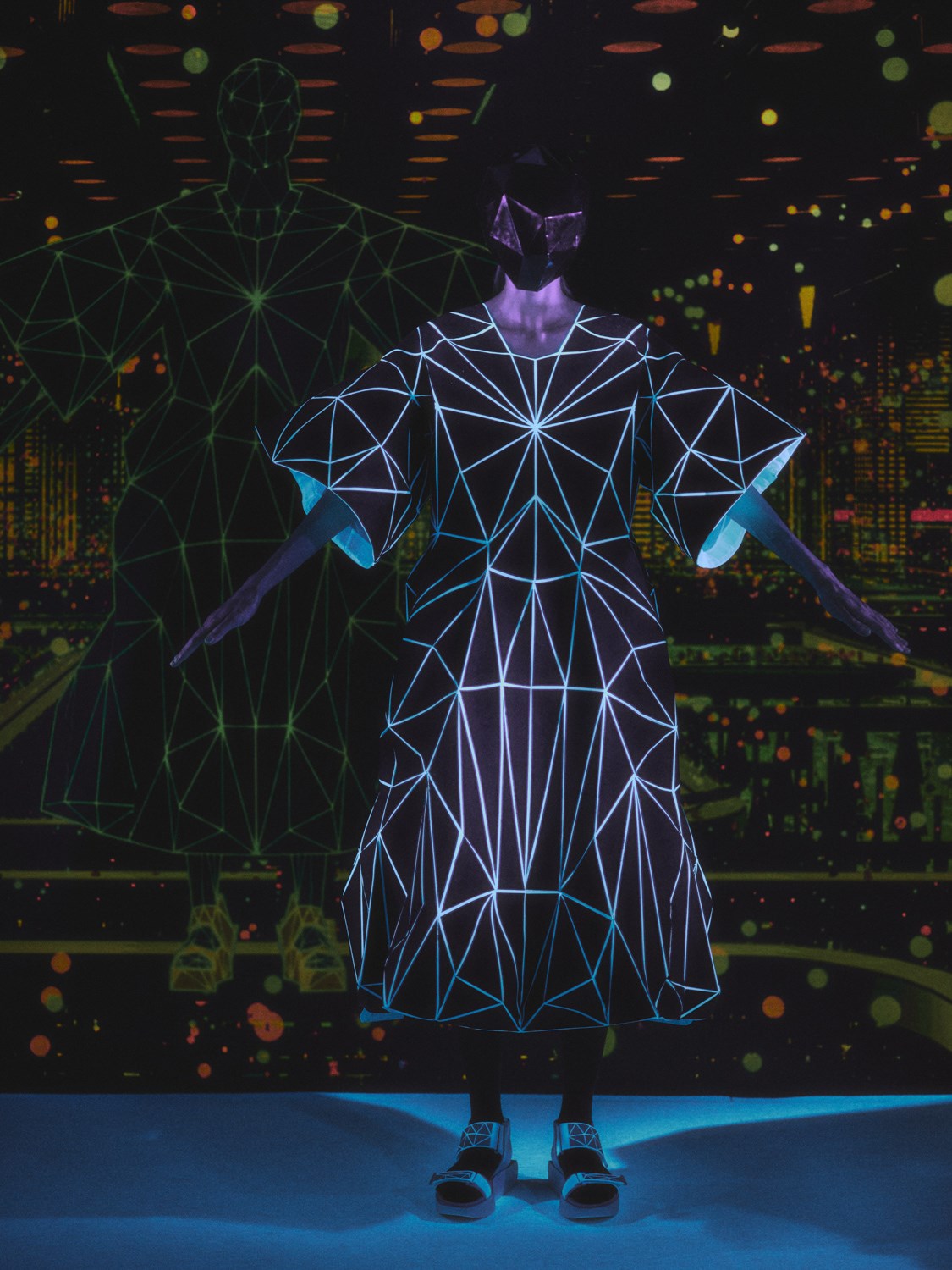
Many designers working on metaverse projects touted their ability to usher unlimited creativity without the needs and the hindrances for producing any physical garments. They also marveled at the no waste consumption of screenwear.
Brands like Tribute – considered an haute couture of cyber fashion – is growing fast as solely a platform for contactless and cyber fashion, culling together expertise in CGI 3D format, UX design, and coding. Customers can buy specific ‘garments’ or ‘cyber garments’ listed on the brand’s site for as little as two hundred dollars up, all in limited series. The customer then sent in his/her/them photo for the Tribute team for fittings and then got the new image in the fit-to-order explicitly made from the multiple pictures customers sent showing their body shapes.

Founded by Natalia Modenova and Daria Shapovalova and based in Los Angeles, DressX is another rising metaverse platform specializing in ‘screenwear.’ The founders explained that initially, 3D models were used to fine-tune samples in place of making the actual pieces. Now, 3D technology has since evolved into much more creative endeavors that encompassed customer-end virtual products and not just the technical aspects of the production process.
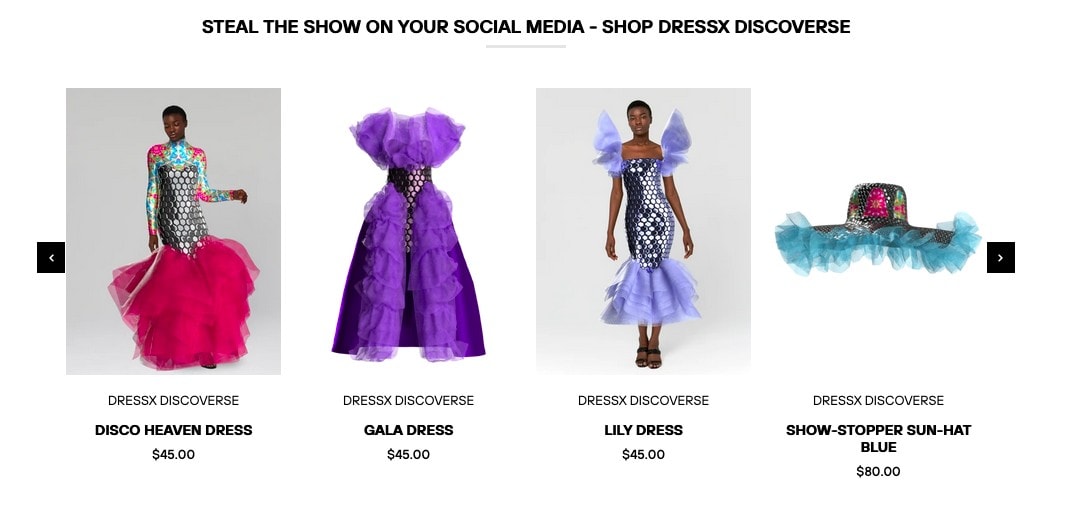
In mid-May, the metaverse platform IMVU invited young designers like Hilary Taymour at Collina Strada and Rio Uribe at Gypsy Sport to a two-day digital and NFT fashion show. It was the virtual fashion show first of its kind for a growing community of digital-savvy kids who could transform themselves anew in this fast-paced environment.
Designers like Ashwini Deshpande, Megnze Zheng, Valentins Studio, and Neo Paradigm are not known to the fashion cognoscenti but recognized names in the world of pixel URL designers.

Big luxury brands like Gucci explored selling sneakers, and Louis Vuitton has created gaming skins for the MOBA League of Legends. But, these initial steps have been limited more like a trial than any efforts at looking beyond the physical. The gaming site Roblox is another future destination for fashion brands hoping to break into this expanding gaming audience.
Kunnihiko Morinaga, the Japanese designer and founder of the Tokyo-based Anrealage, has always put fashion design at the center of his collection since he started the brand in 2005 and showed it in Paris for the first time in 2014. The name Anrealage is a combination of Real, Unreal, and Age.
Morinaga’s collections studied the forms, structures, and constructions of garments, examining in greater detail the precise notion of the cuts of specific shapes and asking how altering the patterns can result in significantly different clothes. The designer also examined the perceptions of clothes, for example, taking a closer look at the scale for Fall 2019 or the differences in 2D and 3D dimensions for spring 2020.
Creating the clothes for a virtual stage concert scene in the upcoming anime Belle (2021) by the Oscar-nominated director Mamoru Hosoda two years ago gave Morinaga the idea that spawned his Spring 2022 collection. Made with Hosoda, the film is a fashion show in the mystical land of U, a futuristic Japanese megalopolis in real and virtual universes.
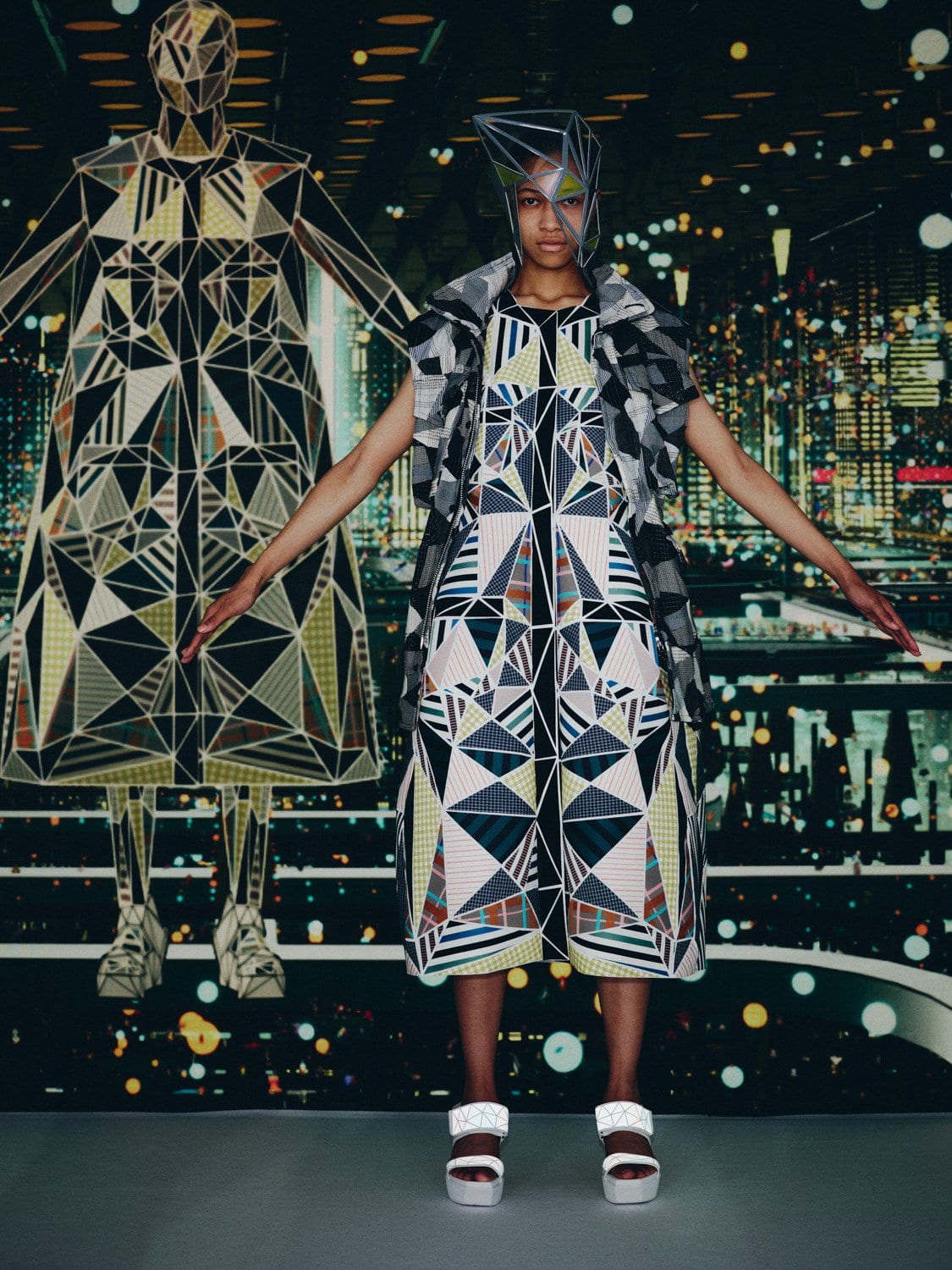
Morinaga created exactly eighteen looks as designs on an avatar and as real clothes made from stitching together triangles of fabrics made from vintage fabrics and garments. The fabrics come as high-tech reflective materials with particular patchwork applications and bonding techniques to achieve the seamless connections of the different triangular fabrics into one unique dress.
Old pieces of denim, vintage chinos, surplus military clothes, old floral prints, old trench coats are cut and sewed onto bonded cotton to form the fabrics with a bit of stiffness and durability to maintain shapes.
The dresses’ shapes are A-line in knee and ankle length, the coats like the one made from vintage military patchwork are oversized paired with a pair of recycled denim, again patchwork into new pants. The new skirt suits comprise of a cropped short sleeve v-cut jacket and short skirt. Elsewhere, on the actually filmed runway, is even a loose floral jumpsuit. Some of these colorful garments have reflective surfaces, a nod to the science fiction platform.
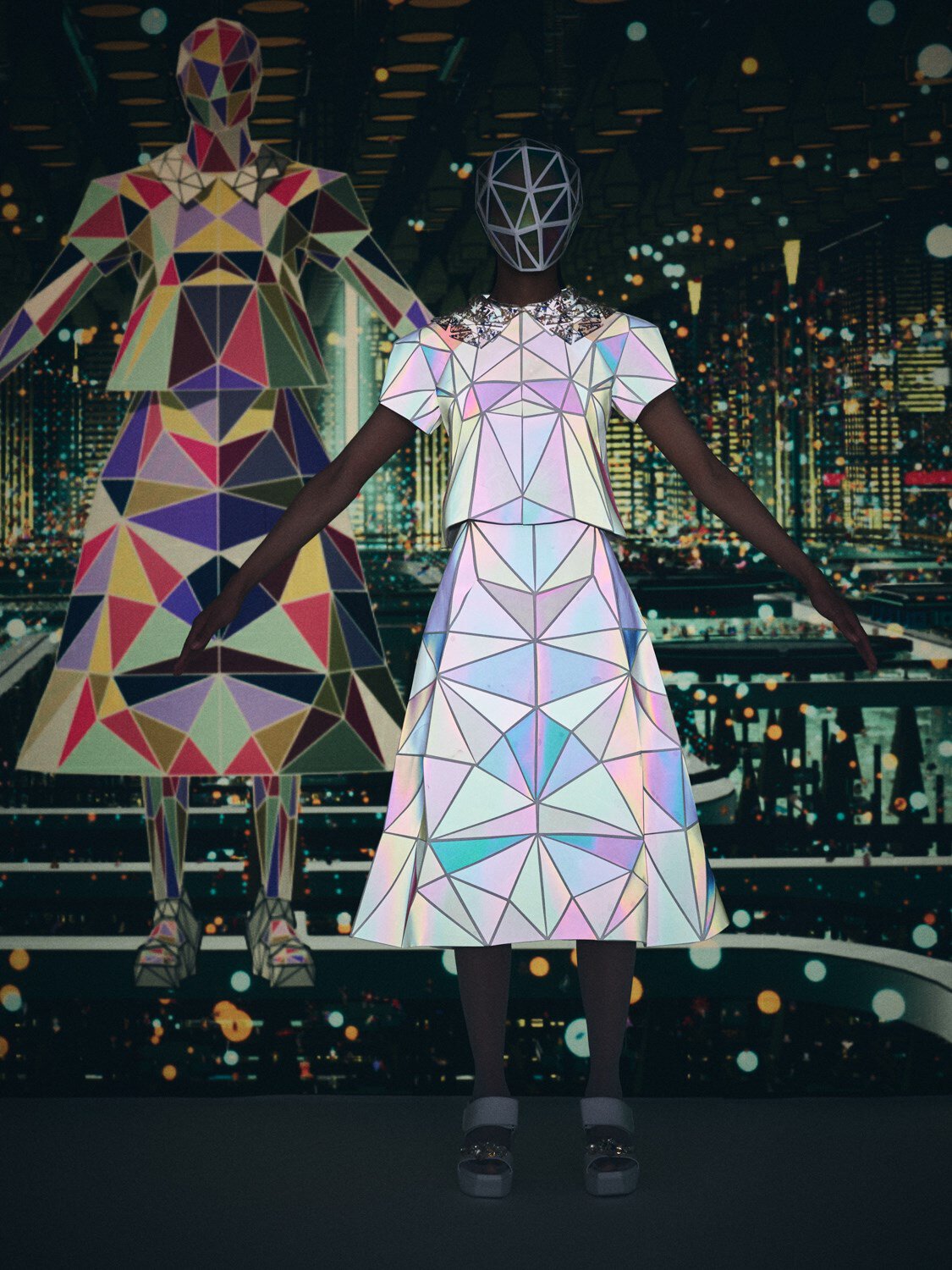
Morinaga designed these garments first as digital clothes, then created the 3D physical garments subsequently by creating the fabrics for the physical clothes made the same shape as each of their 2D versions. Here the designer is closing the gap between a far fetch imagined virtual screenwear and actual physical clothes in the seamless back and forth between the actual runway and the electronic one.
The short film played on this notion of the screen and real-life runway in layers of screens. The heroine’s costume of the animate film Belle came into real life as a long patchwork dress in aurora borealis reflective materials.
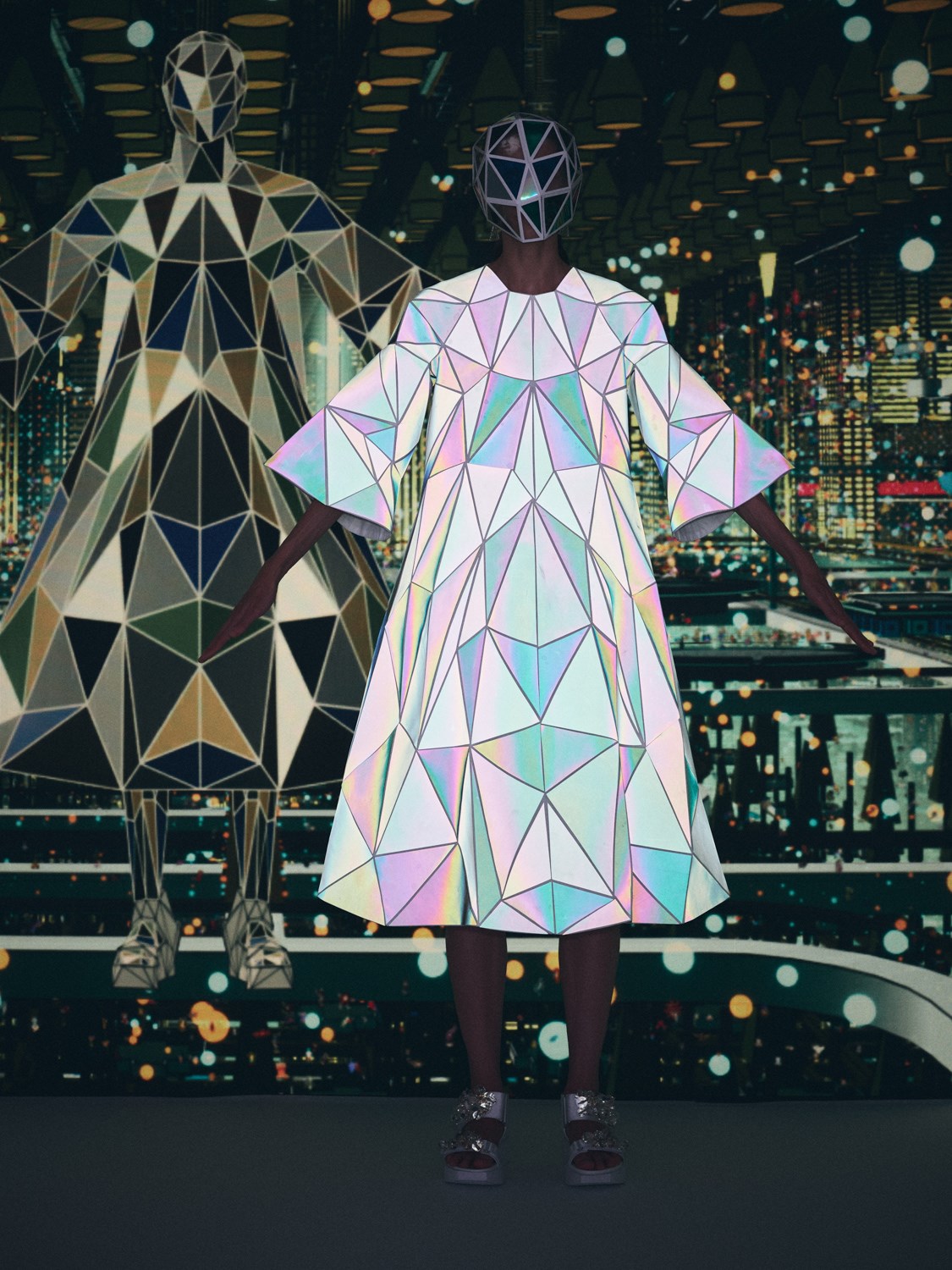
Viewers can also go to the NTT-owned platform DOOR to enter the Anrealage VR site as avatars to view close-ups of the eighteen looks in 3D. And talking about the advent of technology in fashion, these eighteen digital silhouettes will be auctioned off as NFTs in the next week.
I entered the DOOR platform to look at the 3D garments at the VR showroom to explore further seeing the eighteen looks in their virtual realm. Consumers can order these looks directly as an actual e-commerce purchase or a made-to-order non-inventory system. Many young designers are adopting this system of fulfillment to minimize the cost of accumulating inventory that can lead to unnecessary expenses and waste.
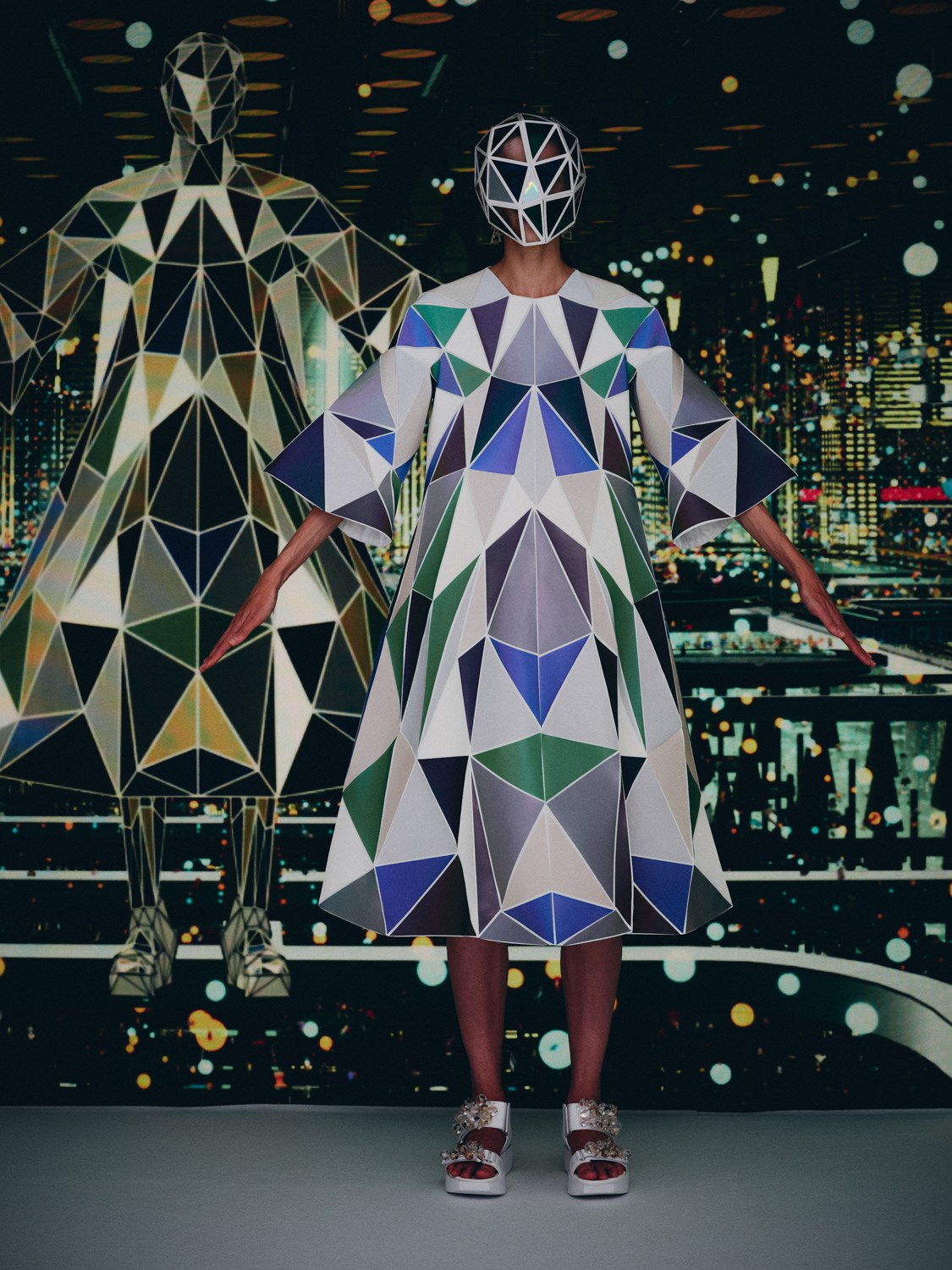
While luxury fashion has indeed jumped fast on the sustainability and waste reduction bandwagon, metaverse clothes can satisfy young consumers’ thirst for screen life with innovative screenwear. Now, Morinaga has made the first bi-virtual-reality concept come to life, reimagining the fashion design process as the meaning of physical clothes.
Perhaps this is one of the ways of moving forward in the post-pandemic era, or at least this Anrealage show provided the platform for discussing new possibilities, either in screenwear, ready-to-wear, or both.
